The Québec maritime Blog
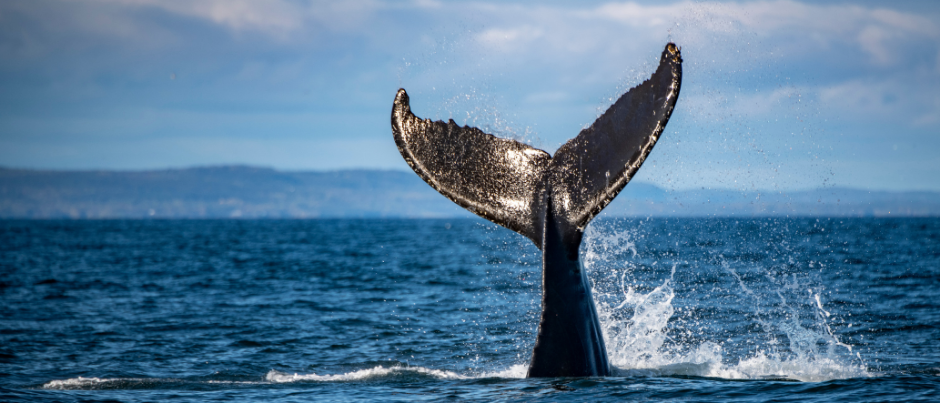
-
Saguenay–St. Lawrence Marine Park, Côte-Nord
Sébastien St-Jean/Tourisme Côte-Nord
Whale and Wildlife Observation: 4 Experiences Not to Miss
The maritime regions of Québec are home to numerous wildlife species, many of which can be observed in their natural habitats: whales, seals, birds, moose, black bears, white-tailed deer and more! If you’re a wildlife lover, here are 4 experiences you won’t want to miss during a vacation in Bas-Saint-Laurent, Gaspésie, Côte-Nord and the Îles de la Madeleine.
Whale watching in the Gulf of St. Lawrence
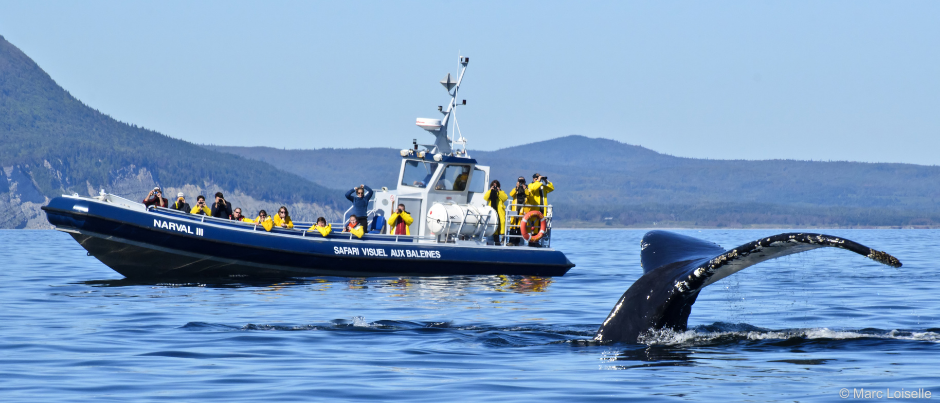
With Croisières Baie de Gaspé, enjoy an intimate moment with marine mammals in the Gulf of St. Lawrence, in Gaspésie. For about 2.5 hours, an interpreter guide will tell you all about the various species you’ll see, which may include fin whales, humpbacks, minke whales, harbour porpoises, white-sided dolphins and even blue whales, the largest animals on the planet! You have a choice of two vessels for your excursion: the Narval III, which accommodates 47 passengers, and the Rocher Le Vieux, which accommodates 12. Whichever you choose, one thing is for sure: you’ll enjoy a safe, authentic and unforgettable experience with the whales of the St. Lawrence!
Practical info:
- Excursions depart from the Grande-Grave wharf in Forillon National Park, 30 minutes from the centre of Gaspé.
- They are available from June 1 to October 18, 2024.
- You must reserve your spot in advance; tickets can be purchased online.
- There are several accommodation options in the area, either right in Forillon National Park (campsites or glamping units) or in the Gaspé area.
What else to see: Depending on where the whales are during your outing, you may also have the opportunity to admire the Forillon area from a different angle. You’re sure to be amazed by the high cliffs along the Gulf of St. Lawrence or by the sight of the Cap-Gaspé Lighthouse overlooking the sea, not to mention the many seabirds whirling above you!
Observing whales from land
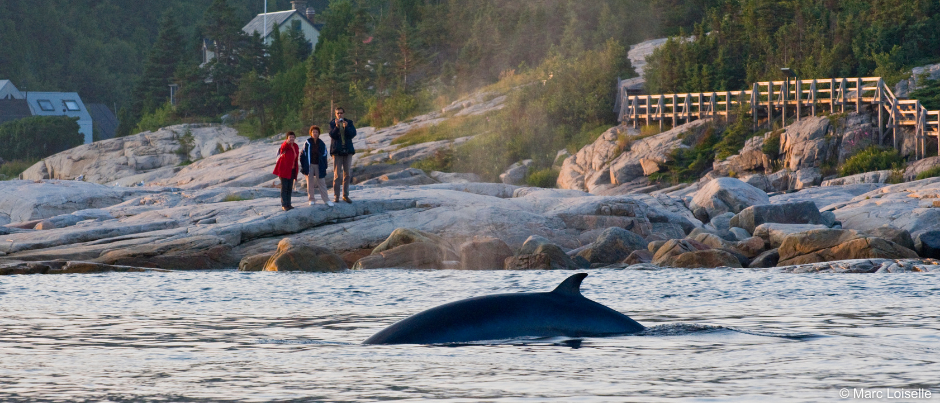
Did you know that you can also observe marine mammals from land? This is what awaits you at the Cap-de-Bon-Désir Interpretation and Observation Centre and the Marine Environment Discovery Centre, both in Côte-Nord. Located along the shores of the Saguenay–St. Lawrence Marine Park, which happens to be one of the best places in the world to see whales, these two sites offer a wide range of interpretive activities focused on the marine world. Up to 13 species of whales frequent this part of the St. Lawrence, so settle on the rocks and let the magic unfold before your eyes… You’re likely to see several species feeding just a few metres from the shore! In addition, interpreter guides will be on hand to answer all your questions.
Practical info:
- The Cap-de-Bon-Désir Interpretation and Observation Centre is located in Les Bergeronnes.
- The Marine Environment Discovery Centre is located in Les Escoumins.
- Both sites are open from June 15 to October 14, 2024.
- You’ll find many accommodations options nearby, in the area from Tadoussac to Les Escoumins.
What else to see: You can also go on a whale-watching excursion in the Saguenay–St. Lawrence Marine Park. Inquire about the various excursions available, which depart from Tadoussac and Les Bergeronnes.
Watching seals basking in the sun
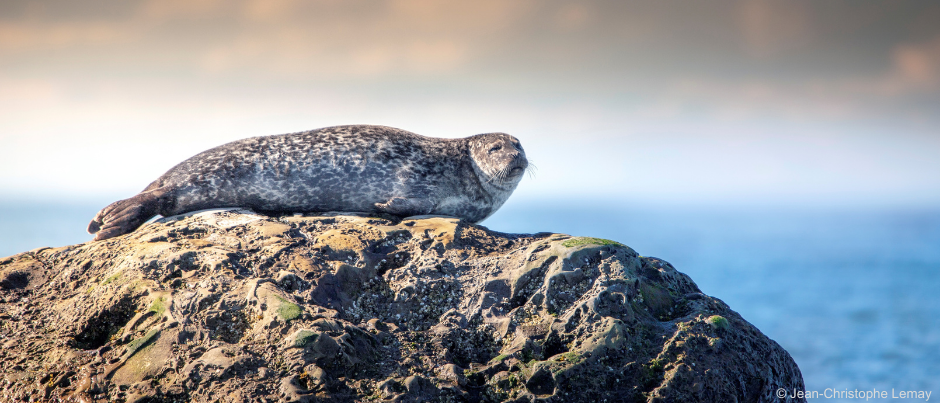
The animal emblem of Parc national du Bic, harbour seals are year-round residents of the St. Lawrence Estuary, which means they’re easy to observe throughout the summer and even in the early fall. In mid-July, they’re joined by grey seals, who also take advantage of the park’s sheltered coves and bays to bask in the sun (which helps them moult). Are you wondering how to tell the two species apart? Harbour seals are smaller and can be recognized on land by the fact that they perform the “banana pose,” keeping their heads and hind flippers off the ground. Grey seals are larger, with elongated snouts and prominent nostrils. To find out more about seals, visit the Cap Caribou and Pointe-aux-Épinettes areas, where a naturalist park ranger will be on hand with binoculars and a telescope and will also be happy to answer all your questions!
Practical info:
- Parc national du Bic is located about 20 km (12 mi.) west of Rimouski.
- The park is open year-round, but the naturalist park ranger is only on site in the summer (schedule varies according to the tides).
- You can spend the night in the park in a campsite, glamping unit or cabin.
- Various accommodation options are also available near the national park and in Rimouski.
What else to see: The park is also home to several species of land mammals, including white-tailed deer, porcupines, fishers and foxes. On rare occasions, moose may also be sighted in the park. If you encounter any of these species, make sure you keep your distance and, above all, do not to feed the animals you see. Just pause, stay quiet and enjoy the moment!
Admiring up to 300 species of birds in one archipelago
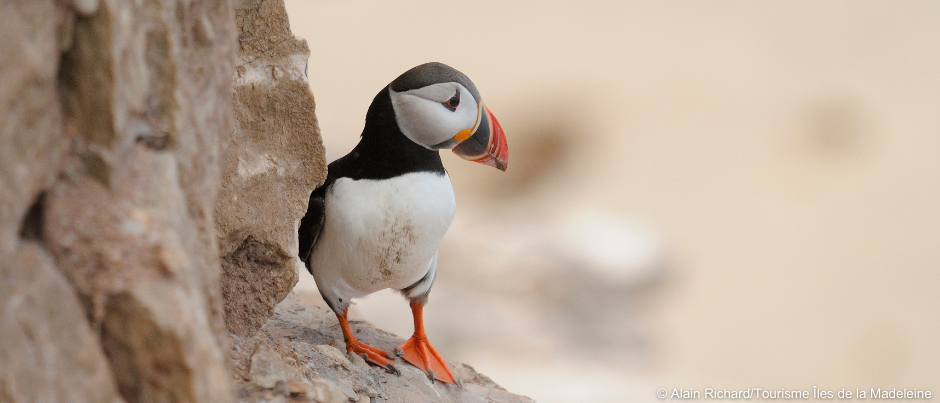
If you’re a birding enthusiast, you’ll love a trip to the Îles de la Madeleine: this small archipelago, which is only 65 km (40 mi.) long, is home to 300 bird species! Amazing, right? It’s thanks to the archipelago’s diversity of natural environments that seabirds, birds of prey, waterfowl and shoreline species make their permanent or temporary homes here. The Pointe-de-l’Est National Wildlife Area and the trails in Parc des Buck and around the Étang de la Martinique pond are just some of the places to go bird watching. Sea excursions can also lead to great sightings, especially around Entry Island and Rocher aux Oiseaux (Bird Rock). Inquire about the excursions on offer and don’t forget to bring your binoculars!
Practical info:
- Located in the middle of the Gulf of St. Lawrence, the Îles de la Madeleine are accessible by air or by ferry from Souris (Prince Edward Island) to Cap-aux-Meules.
- You can go bird watching year-round. May, June, September and October are the best months to see migratory birds.
- Several accommodation options are available throughout the archipelago. Be sure to book your stay well in advance of your trip!
What else to see: The beaches on the Islands are the only place in Québec where the endangered piping plovers nest. You’ll be able to observe these birds from late April to mid-August, especially on the beach along Havre-aux-Basques Bay. Keep your eyes peeled and be sure to avoid breeding areas marked with signs.
Have these suggestions inspired the wildlife lover in you? Start planning your trip to the maritime regions of Québec now!

(0) comment